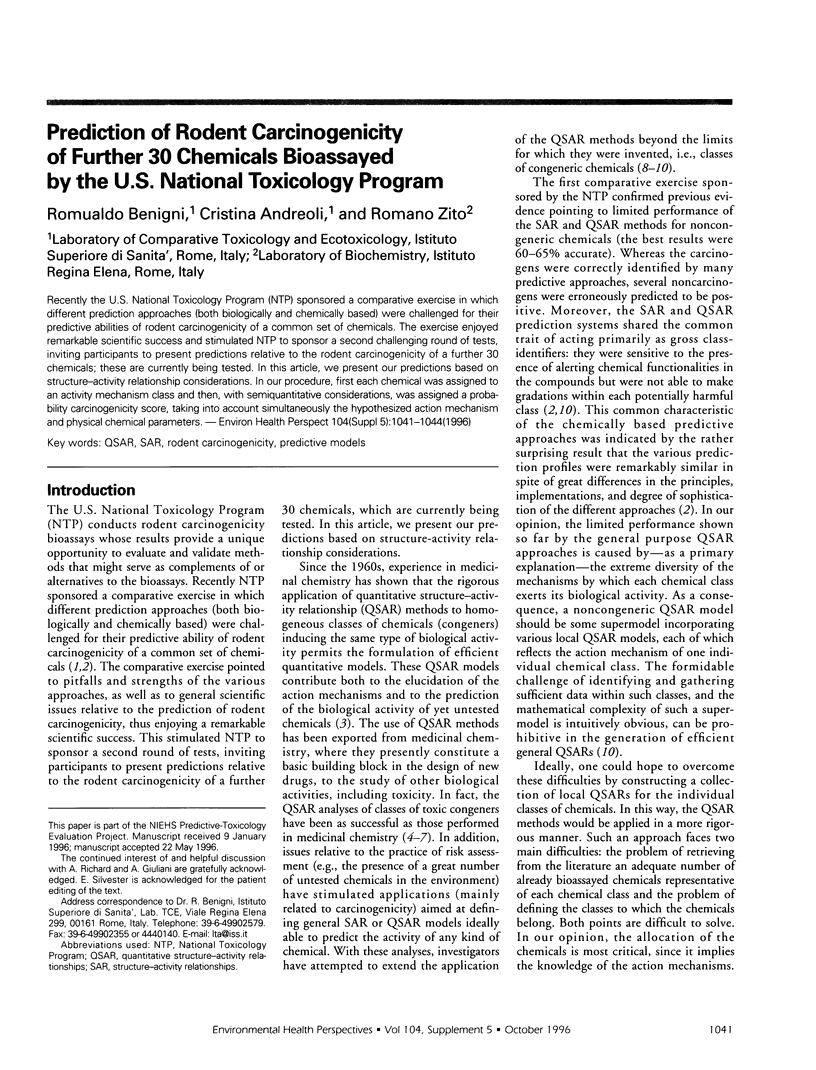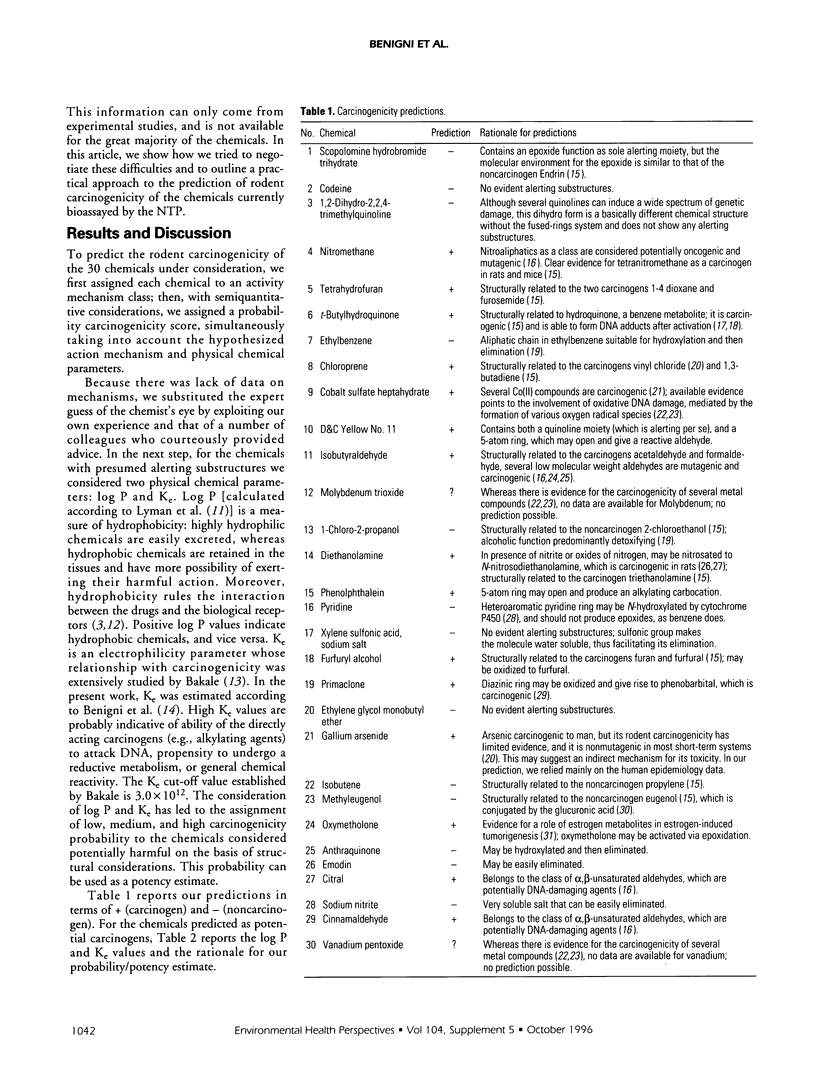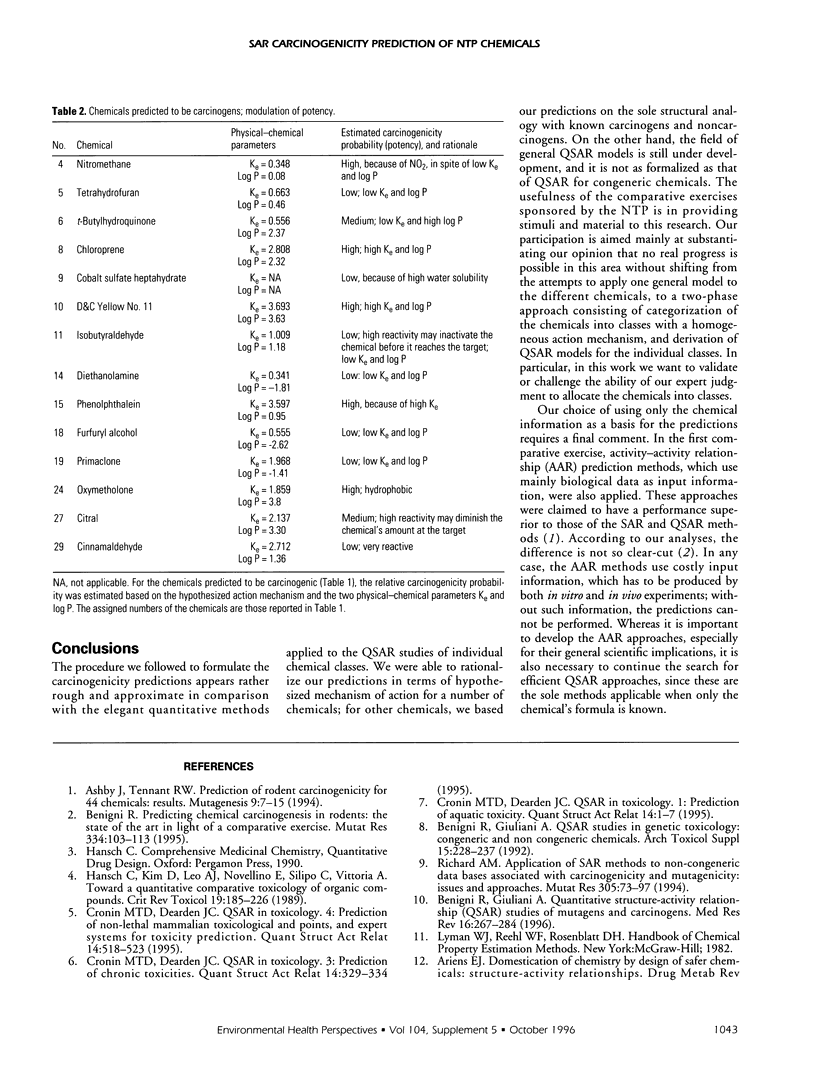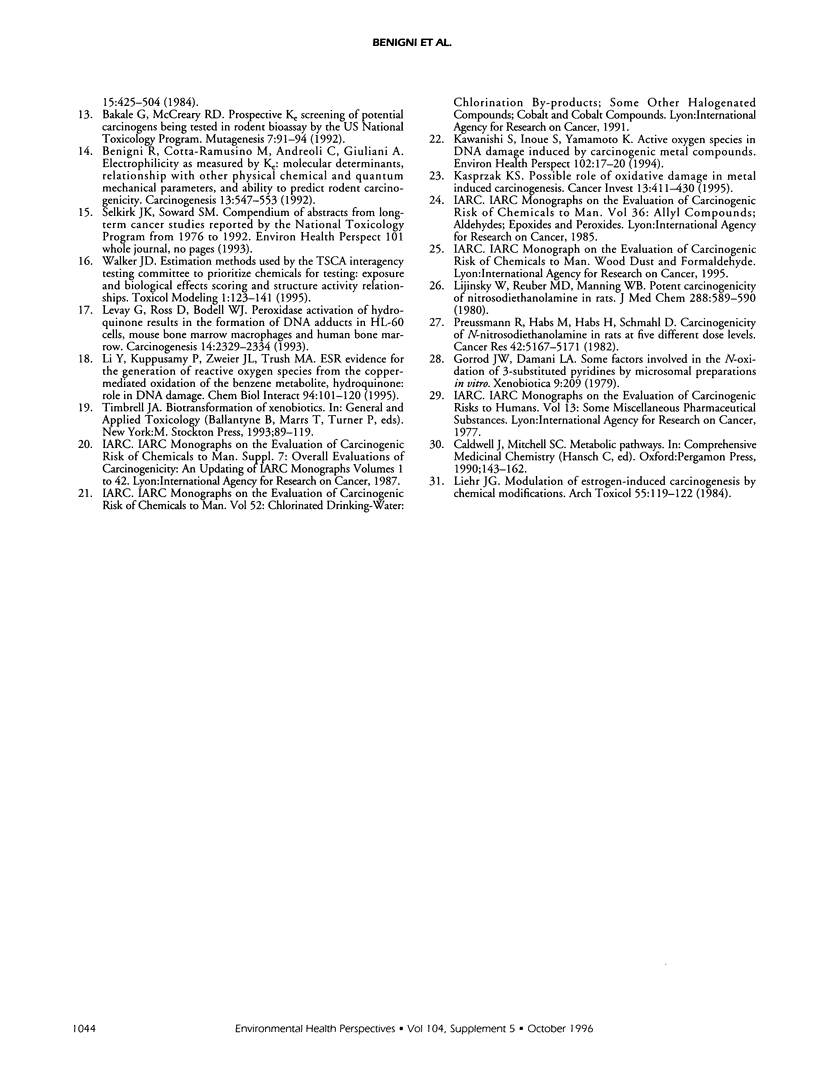Abstract
Recently the U.S. National Toxicology Program (NTP) sponsored a comparative exercise in which different prediction approaches (both biologically and chemically based) were challenged for their predictive abilities of rodent carcinogenicity of a common set of chemicals. The exercise enjoyed remarkable scientific success and stimulated NTP to sponsor a second challenging round of tests, inviting participants to present predictions relative to the rodent carcinogenicity of a further 30 chemicals; these are currently being tested. In this article, we present our predictions based on structure-activity relationship considerations. In our procedure, first each chemical was assigned to an activity mechanism class and then, with semiquantitative considerations, was assigned a probability carcinogenicity score, taking into account simultaneously the hypothesized action mechanism and physical chemical parameters.
Full text
PDF



Selected References
These references are in PubMed. This may not be the complete list of references from this article.
- Ashby J., Tennant R. W. Prediction of rodent carcinogenicity for 44 chemicals: results. Mutagenesis. 1994 Jan;9(1):7–15. doi: 10.1093/mutage/9.1.7. [DOI] [PubMed] [Google Scholar]
- Bakale G., McCreary R. D. Prospective ke screening of potential carcinogens being tested in rodent bioassays by the US National Toxicology Program. Mutagenesis. 1992 Mar;7(2):91–94. doi: 10.1093/mutage/7.2.91. [DOI] [PubMed] [Google Scholar]
- Benigni R., Cotta-Ramusino M., Andreoli C., Giuliani A. Electrophilicity as measured by Ke: molecular determinants, relationship with other physical-chemical and quantum mechanical parameters, and ability to predict rodent carcinogenicity. Carcinogenesis. 1992 Apr;13(4):547–553. doi: 10.1093/carcin/13.4.547. [DOI] [PubMed] [Google Scholar]
- Benigni R., Giuliani A. QSAR studies in genetic toxicology: congeneric and non congeneric chemicals. Arch Toxicol Suppl. 1992;15:228–237. doi: 10.1007/978-3-642-77260-3_30. [DOI] [PubMed] [Google Scholar]
- Benigni R., Giuliani A. Quantitative structure--activity relationship (QSAR) studies of mutagens and carcinogens. Med Res Rev. 1996 May;16(3):267–284. doi: 10.1002/(SICI)1098-1128(199605)16:3<267::AID-MED3>3.0.CO;2-X. [DOI] [PubMed] [Google Scholar]
- Benigni R. Predicting chemical carcinogenesis in rodents: the state of the art in light of a comparative exercise. Mutat Res. 1995 Feb;334(1):103–113. doi: 10.1016/0165-1161(95)90036-5. [DOI] [PubMed] [Google Scholar]
- Gorrod J. W., Damani L. A. Some factors involved in the N-oxidation of 3-substituted pyridines by microsomal preparations in vitro. Xenobiotica. 1979 Apr;9(4):209–218. doi: 10.3109/00498257909038723. [DOI] [PubMed] [Google Scholar]
- Hansch C., Kim D., Leo A. J., Novellino E., Silipo C., Vittoria A. Toward a quantitative comparative toxicology of organic compounds. Crit Rev Toxicol. 1989;19(3):185–226. doi: 10.3109/10408448909037471. [DOI] [PubMed] [Google Scholar]
- Kasprzak K. S. Possible role of oxidative damage in metal-induced carcinogenesis. Cancer Invest. 1995;13(4):411–430. doi: 10.3109/07357909509031921. [DOI] [PubMed] [Google Scholar]
- Kawanishi S., Inoue S., Yamamoto K. Active oxygen species in DNA damage induced by carcinogenic metal compounds. Environ Health Perspect. 1994 Sep;102 (Suppl 3):17–20. doi: 10.1289/ehp.94102s317. [DOI] [PMC free article] [PubMed] [Google Scholar]
- Li Y., Kuppusamy P., Zweier J. L., Trush M. A. ESR evidence for the generation of reactive oxygen species from the copper-mediated oxidation of the benzene metabolite, hydroquinone: role in DNA damage. Chem Biol Interact. 1995 Feb;94(2):101–120. doi: 10.1016/0009-2797(94)03326-4. [DOI] [PubMed] [Google Scholar]
- Liehr J. G. Modulation of estrogen-induced carcinogenesis by chemical modifications. Arch Toxicol. 1984 Jul;55(2):119–122. doi: 10.1007/BF00346049. [DOI] [PubMed] [Google Scholar]
- Lijinsky W., Reuber M. D., Manning W. B. Potent carcinogenicity of nitrosodiethanolamine in rats. Nature. 1980 Dec 11;288(5791):589–590. doi: 10.1038/288589a0. [DOI] [PubMed] [Google Scholar]
- Lévay G., Ross D., Bodell W. J. Peroxidase activation of hydroquinone results in the formation of DNA adducts in HL-60 cells, mouse bone marrow macrophages and human bone marrow. Carcinogenesis. 1993 Nov;14(11):2329–2334. doi: 10.1093/carcin/14.11.2329. [DOI] [PubMed] [Google Scholar]
- Preussmann R., Habs M., Habs H., Schmähl D. Carcinogenicity of N-nitrosodiethanolamine in rats at five different dose levels. Cancer Res. 1982 Dec;42(12):5167–5171. [PubMed] [Google Scholar]
- Richard A. M. International Commission for Protection Against Environmental Mutagens and Carcinogens. Application of SAR methods to non-congeneric data bases associated with carcinogenicity and mutagenicity: issues and approaches. Mutat Res. 1994 Feb 1;305(1):73–97. doi: 10.1016/0027-5107(94)90127-9. [DOI] [PubMed] [Google Scholar]


